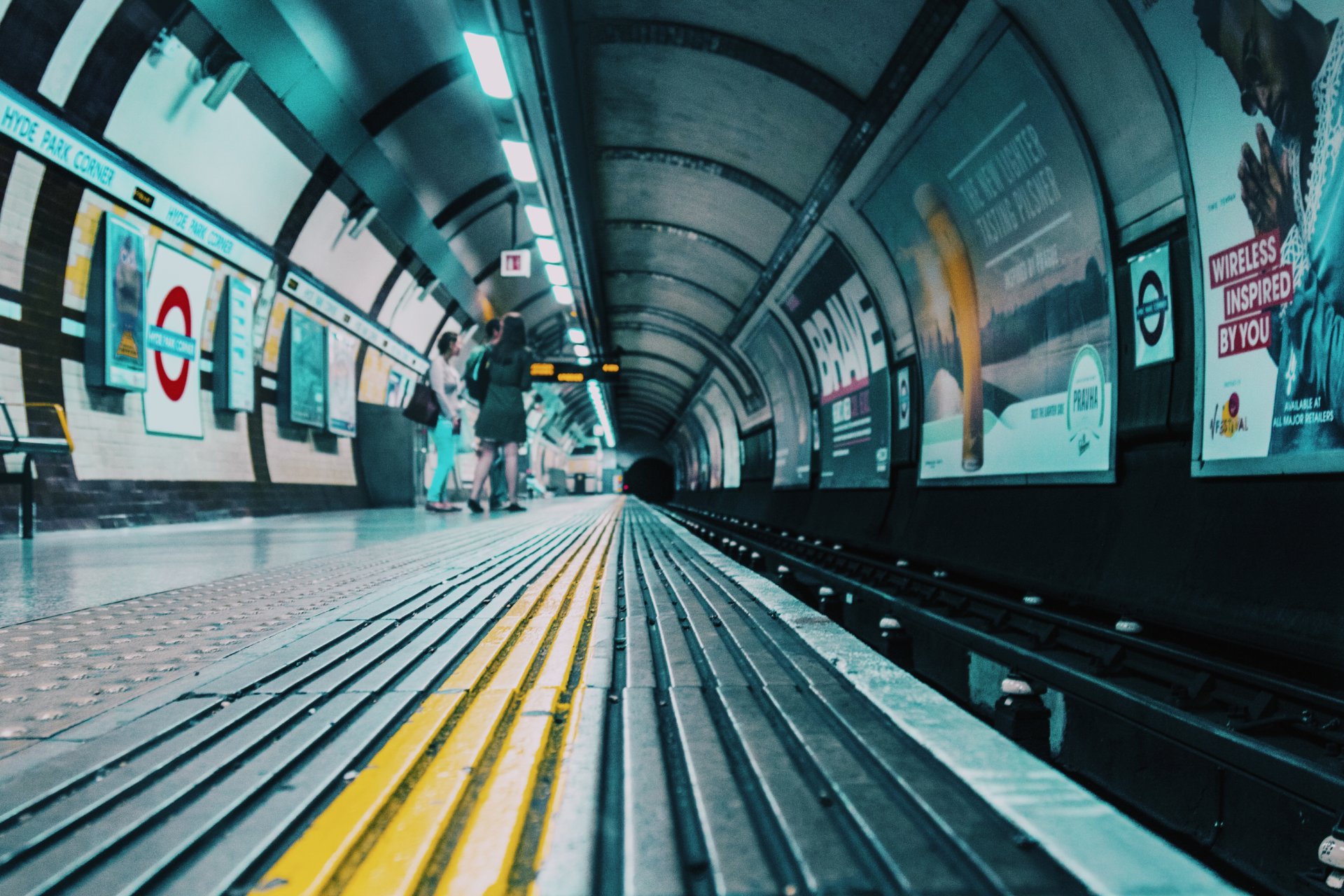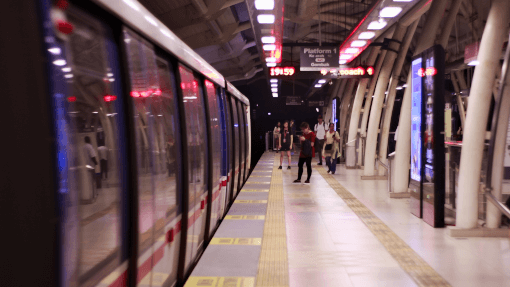
Planifier son trajet, connaître les temps d’attente aux arrêts de bus, savoir où descendre, réagir en cas de perturbation : utiliser les transports en commun nécessite d’avoir accès à l’information à chaque étape. La tâche est bien sûr beaucoup plus complexe pour les personnes en situation de handicap, qu’il soit moteur, sensoriel ou intellectuel. Cet article propose une liste de solutions permettant de fournir des informations accessibles sur les transports en commun à tous les types de voyageurs.
Les besoins des passagers handicapés en matière d’information sur les transports publics accessibles
L’information voyageurs englobe toutes les informations transmises aux voyageurs des réseaux de transport à chaque étape de leur voyage. Ces informations peuvent être fournies sous différents formats papier ou numériques et peuvent être consultées à distance, aux gares et aux arrêts, voire à bord des véhicules. Si ces informations s’adressent à tous les voyageurs, leur diffusion aux personnes en situation de handicap est beaucoup plus complexe.
Les voyageurs handicapés doivent recevoir les informations en temps réel et dans un format approprié afin de :
⊗ Préparer leur itinéraire en fonction de leur mobilité (localisation des arrêts, accessibilité du réseau de transport) ;
⊗ Connaître en temps réel l’état de fonctionnement des équipements adaptés (ascenseurs, escaliers mécaniques, etc.) ;
⊗ Être informé de la prochaine étape de leur parcours (checklist) ;
⊗ Sachez quoi faire en cas d’interruption de service.
Leurs besoins spécifiques se complexifient lors d’événements exceptionnels (pannes, grèves, détours, arrêts non desservis, etc.). Les personnes malentendantes peuvent rarement obtenir des informations sur les perturbations, celles-ci étant généralement annoncées oralement. Les personnes malvoyantes perdent leurs repères et peinent à trouver un itinéraire alternatif. Les personnes en situation de handicap moteur peuvent se retrouver dans l’impossibilité d’emprunter un autre moyen de transport en raison d’obstacles physiques.
Enfin, les personnes présentant une déficience intellectuelle éprouveront également des difficultés à comprendre l’information, à prendre une décision et à trouver de nouveaux repères. Autre aspect important : le stress causé par les perturbations est bien plus lourd pour tous les voyageurs, en raison de leurs difficultés particulières et de leur sensibilité parfois accrue (handicap psychique, autisme).
Préparation de voyage avec des planificateurs de voyage faciles à utiliser
Pour une personne en situation de handicap, la préparation est essentielle à la réussite d’un voyage. Il y a quelques années, la planification d’un voyage reposait sur des cartes et des horaires notés sur papier, et ceux-ci restent essentiels pour certains. Mais les alternatives numériques actuelles ont rendu la planification beaucoup plus efficace. Les opérateurs de transport proposent généralement un proposé de voyage sur leur site web, complété par une application mobile.
Cependant, ces restrictions de voyage doivent remplir les conditions suivantes pour être utilisables par une personne handicapée et répondre à ses besoins :
⊗ L’interface web ou téléphonique doit être conforme aux normes d’accessibilité numérique (utilisable avec un lecteur d’écran, adaptable aux paramètres d’affichage de l’utilisateur, etc.).
⊗ Les options du prévu de voyage doivent inclure des critères d’accessibilité : ascenseurs, escaliers mécaniques, accès de plain-pied, etc.
⊗ Les stations et arrêts doivent pouvoir être localisés sur une carte et par leur adresse réelle, qui doit être entièrement écrite (pour ceux qui ne peuvent pas lire la carte et afin qu’elle puisse être saisie dans un GPS).
Pour faciliter la mobilité de tous, toutes les informations sur les réseaux de transport devraient être rendues publiques afin de pouvoir être intégrées aux prédéfinis d’itinéraires multimodaux . En effet, l’utilisation d’applications ou de définition d’itinéraires spécifiques à une ville donnée constitue souvent un obstacle.
Matériel écrit ou audio conçu pour différents handicaps
Malgré le développement des technologies numériques, les supports physiques peuvent encore s’avérer très utiles à de nombreux usagers des transports. C’est pourquoi il est important de mettre à disposition des usagers des plans simples ou des horaires en gros caractères. Londres, par exemple, propose une grande variété de plans de métro ; ils sont proposés en couleurs contrastées et en format audio. Certains plans ne montrent que le réseau aérien pour les personnes souffrant de claustrophobie. Toulouse (France) propose également une audiodescription de ses stations de métro .
Points d’information visuelle et audio pour les voyageurs
Départs, correspondances et arrivées : chaque étape d’un voyage à son arrêt. À chaque arrêt, des informations accessibles sur les transports en commun sont nécessaires.
Les bornes d’information voyageurs sont des panneaux lumineux installés aux arrêts de bus, de tramway ou de métro. Ces panneaux informent les passagers du temps d’attente et des éventuelles perturbations sur la ligne desservant l’arrêt.
Mais à quoi servent-ils pour une personne malvoyante ? Ces bornes doivent être audio, éventuellement via une télécommande ou un smartphone. Cette fonctionnalité présente deux avantages. Premièrement, l’audio à la demande fournit aux personnes illettrées les mêmes informations que tout le monde. Deuxièmement, l’activation du panneau à distance permet également aux personnes malvoyantes de localiser précisément l’arrêt et de confirmer qu’elles sont bien à l’endroit souhaité.
Cette solution a déjà été déployée dans de nombreuses villes à travers le monde, comme San Francisco, Auckland, Toulouse, Lyon ou Prague.
Lisez notre article : Obstacles dans les transports en commun : quelles solutions pour le handicap physique ?
Annonces de perturbations en audio et par écrit
En cas de perturbations (pannes, grèves, déviations de lignes ou simple changement de quai), l’information est généralement diffusée aux voyageurs par un système de sonorisation installé dans les véhicules ou à l’arrêt. Les personnes sourdes remarquent le changement d’attitude des voyageurs autour d’elles sans en comprendre la raison. La situation devient d’autant plus pénible pour elles lorsqu’elles se rendent rapidement compte d’un problème, sans avoir eu connaissance de la solution proposée. Il est donc essentiel que ces informations soient également diffusées sur des écrans installés à cet effet.
Alertes SMS en cas de perturbations : accessibilité universelle
Pour les personnes handicapées, les perturbations de leurs moyens de transport peuvent être source de stress et de difficultés supplémentaires. C’est pourquoi il est essentiel d’anticiper ces situations, plus que pour les autres voyageurs.
Des alertes SMS sont déjà disponibles sur de nombreux réseaux de transports urbains, informant en temps réel des perturbations affectant l’ensemble du réseau ou uniquement les lignes sélectionnées au préalable par l’usager en fonction de son itinéraire habituel.
Ce système s’adresse à tous les usagers des transports. Pour qu’une personne en situation de handicap puisse également bénéficier de cette technologie, il est essentiel de s’assurer que l’abonnement au service ne constitue pas un obstacle. Le respect des normes d’accessibilité numérique et une procédure simple restent essentiels.
Il est important de noter que ce système d’alertes SMS ne doit pas remplacer les autres méthodes d’information sur les perturbations. En effet, les personnes sans téléphone portable ou non inscrites au service resteraient dans l’ignorance.
Annonce visuelle et audio du prochain arrêt
Dans tous les transports en commun, l’annonce de l’arrêt suivant est une information essentielle pour les passagers, d’autant plus s’ils ne connaissent pas le trajet. Cette information est souvent affichée sur un panneau lumineux. Mais elle doit aussi être donnée oralement. Ceci s’adresse évidemment aux personnes malvoyantes, mais plus généralement à toute personne ne sachant pas lire, que ce soit en raison de l’illettrisme ou simplement de son emplacement.
Certaines applications pour smartphone alertent les utilisateurs du moment où ils doivent demander leur arrêt.
Applications innovantes pour smartphones permettant aux passagers de se connecter
L’utilisation des smartphones s’est généralisée et a ouvert de nouvelles possibilités de déplacements individuels. Certaines applications proposent de mettre en relation une personne handicapée avec des bénévoles ponctuels, pour une minute, une heure ou plus. BeMyEyes
en est un bon exemple : elle permet aux personnes aveugles ou malvoyantes d’obtenir une assistance visuelle via une conversation vidéo avec l’un des nombreux bénévoles prêts à prêter leurs yeux pendant quelques minutes. Côté, Faciligo est une plateforme française de compagnons de voyage permettant aux personnes à mobilité réduite de trouver un accompagnateur pour tout type de trajet en transports en commun. L’idée est de mettre en relation les voyageurs à mobilité réduite ou en situation de handicap, et même les personnes âgées, avec les personnes valides, améliorant ainsi l’accès aux transports pour les personnes ne pouvant pas voyager seules. En contrepartie de cette aide, l’accompagnateur bénéficie d’une réduction sur le prix de son billet.
Ateliers sur les réseaux de transport pour les usagers les plus vulnérables
L’aide d’une tierce personne est parfois indispensable pour préparer un déplacement et permettre à une personne handicapée de se déplacer en toute autonomie dans les transports en commun. Certains opérateurs de transport proposent des ateliers ou des formations permettant aux personnes handicapées de se rencontrer avec le réseau.
À Paris, la RATP organise des Ateliers Mobilité . Initialement destinés aux voyageurs en situation de handicap intellectuel, ces ateliers ont rapidement été étendus aux écoles et ont été très appréciés des participants.
Voici d’excellents exemples d’informations sur les transports publics accessibles que vous pouvez également mettre en œuvre dans votre réseau pour aider vos utilisateurs.
L’ajout d’informations audio aux informations visuelles et inversement, la mise en place de services numériques accessibles, l’utilisation d’applications mobiles et l’accompagnement communautaire à la demande ne sont que quelques-unes des nombreuses initiatives locales qui ont vu le jour pour ouvrir l’accès à l’information à tous les voyageurs. L’enjeu principal aujourd’hui reste la standardisation des différentes sources et la diffusion de l’information auprès de tous afin que chacun puisse en tirer profit.
media

For disabled people, disruptions to their means of transportation can cause plenty of stress and added difficulties. That’s why such situations need to be anticipated, more so than for other travelers.
writer

Lise Wagner
Accessibility Expert
stay updated
Get the latest news about accessibility and the Smart City.
other articles for you

Open Data Is Key to Fostering Universal Accessibility
Open data represents an opportunity for cities to reach universal accessibility. It shows the missing links of the mobility chain.
Our Audio Beacons Guide the Blind and Visually Impaired at the Helsinki Subway
The Helsinky subway improved their audio signage system by installing on demand and remotely activated audio beacons.
7 Good Reasons to Install Audio Beacons at Your Public Transport Network
Audio beacons are an efficient way to provide more autonomy to blind and visually impaired people. They can easily use public transport.

Will Remote Activation Become the Norm for Accessible Pedestrian Signals?
More and more cities like New York have been exploring remote activation to trigger accessible pedestrian signals.
share our article!
more articles

Disability Statistics in the US: Looking Beyond Figures for an Accessible and Inclusive Society
Disability Statistics in the US: Looking Beyond Figures for an Accessible and Inclusive Society Around 61 million adults in the United States live with a disability. Diving into disability statistics in the US will help us know exactly who is concerned and what...
Our Audio Beacons Guide the Blind and Visually Impaired at the Helsinki Subway
Our Audio Beacons Guide the Blind and Visually Impaired at the Helsinki SubwayOur audio beacons equip the new line of the Helsinki subway in Finland. They help blind and visually impaired people locate the points of interest of a station. For users with visual...

Will Remote Activation Become the Norm for Accessible Pedestrian Signals?
Will Remote Activation Become the Norm for Accessible Pedestrian Signals?Without pushbutton, there are no accessible pedestrian signals. That’s how APS work in the U.S. But more and more cities have been exploring remote activation like New York City. The Department...

Hearing Impaired People: a Multitude of Profiles for Different Needs
Hearing Impaired People: a Multitude of Profiles for Different Needs Did you know that hearing impaired people have several profiles and that the way they identify themselves is important? You may be familiar with deaf and hard of hearing people but for each of...
NEVER miss the latest news about the Smart City.
Sign up now for our newsletter.
Unsubscribe in one click. The information collected is confidential and kept safe.
powered by okeenea
The French leading company
on the accessibility market.
For more than 25 years, we have been developing architectural access solutions for buildings and streets. Everyday, we rethink today’s cities to transform them in smart cities accessible to everyone.
By creating solutions ever more tailored to the needs of people with disabilities, we push the limits, constantly improve the urban life and make the cities more enjoyable for the growing majority.


